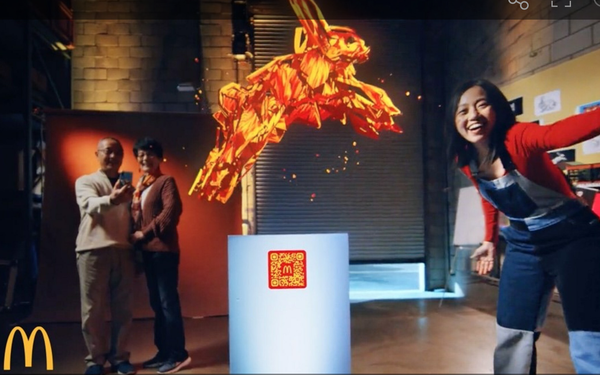New Multicultural Research Reveals Spending Power, Swing To Liberalism
- by Sarah Mahoney @mahoney_sarah, January 19, 2024

McDonald's Lunar New Year celebration
While various ethnic groups have been growing fast for some time, the shifts are more extensive than many marketers realize. New research from Collage Group, an agency specializing in multicultural marketing, indicates that Hispanic, Black, Asian and Native American people will make up the majority of the U.S. by 2050.
Taken together, those groups grew 364% between 2012 and 2022. And they have increased by 4 million since 2021.
Those increases stem from higher birth rates and more Americans rethinking their identities. Additionally, the U.S. Census made improvements in 2020, sharpening questions and data collection.
Of those groups, the Hispanic population is expected to increase by 6% through 2050, Asian up by 3%, and other up by 2%. The percentage of Black people is expected to remain stable, while the number of white people is likely to decline by 11%.
advertisement
advertisement
Collage Group also unearthed definitive political differences among various groups. Black people are most likely to identify themselves as liberal, at 37%. Asian Americans come next, at 35%, followed by Hispanics, at 34%. That is significantly more than the total population for all three groups.
Conversely, 39% of white people in the survey identify as conservative, also significantly higher than the overall population. Just 26% describe themselves as liberal, the least of any group.
Asian Americans were most apt to call themselves centrist, at 22%, followed by whites, 18%, Hispanics, 16%, and Blacks, 15%.
Asian Americans 25 and older are far more likely to have a bachelor’s degree, at 59%, an 8% increase from 2012. They are also the highest earners, with a median household income of $108,700. White people came next in educational attainment, at 42%, a 7% gain in that period. At 28%, Hispanics were least likely to have a four-year degree. Black Americans have the lowest household income, at $52,860.
Each segment has seen significant growth in spending. For marketers, though, the takeaway is how different the growth trajectories are.
From 2000 to 2021, Hispanic spending power grew 320% to $2.1 trillion. For Black Americans, spending 183% to $1.7 trillion. And Asian spending has increased 367% to $1.4 trillion.
For white Americans, however, spending gained just 133%, to $14.9 trillion in that period.
Collage Group also listened to language preferences. That includes how each group prefers to be described: Hispanic, Latino or Latnina, Black and African American are most preferred.
Researchers also delved into the language consumers speak at home. Collage reports that the largest group of Hispanic people, at 40%, are what it calls bicultural, using both English and Spanish languages. Next comes a segment researchers call acculturated, at 32.1%. They primarily speak in English and refer to themselves as Americans. And 28% are unacculturated, mainly speaking Spanish.
“Most Hispanics speak English proficiently, but over two-thirds speak Spanish at home,” the report says. “Bilingualism boosts their cultural duality and a propensity to view their Hispanicity as a key part of their identity.” Creating marketing campaigns in both English and Spanish speaks to their cultural pride.
It adds that marketers will do well to notice language preferences in all groups. Nearly 10% of Black people in the U.S. speak a non-English language at home, led by Haitian, Spanish and French. And 68% of Asian Americans use a non-English language at home, led by Chinese, Vietnamese and Tagalog.




